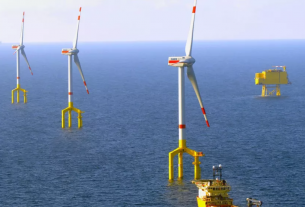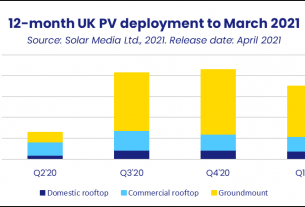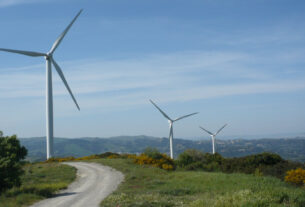France – New capacity to generate electricity from solar, wind, and other renewable sources will grow even faster than it did in 2021, when it reached a record high, as governments seek to capitalize on renewables’ energy security and climate benefits, says the International Energy Agency.
According to the IEA’s latest Renewable Energy Market Update, the world added a record 295 gigatonnes of new renewable power capacity in 2021, overcoming supply chain challenges, construction delays, and high raw material prices. Global capacity additions are expected to reach 320 gigatonnes this year, which is close to meeting Germany’s entire electricity demand or matching the European Union’s total electricity generation from natural gas. Solar PV is on track to account for 60% of global renewable power growth in 2022, trailed only by wind and hydropower.
Annual additions in the European Union increased by nearly 30% to 36 gigatonnes in 2021, finally breaking the bloc’s previous record of 35 gigatonnes set a decade ago. The additional renewable capacity scheduled to be installed in 2022 and 2023 has the potential to significantly reduce the European Union’s reliance on Russian gas in the power sector. However, the actual contribution will be determined by the success of parallel energy efficiency measures aimed at reducing the region’s energy demand.
Renewables growth has been much faster than expected this year, thanks to strong policy support in China, the European Union, and Latin America, which has more than compensated for slower-than-expected growth in the United States. The US outlook is clouded by uncertainty about new wind and solar incentives, as well as trade actions against solar PV imports from China and Southeast Asia.
However, based on current policy settings, global growth in renewable energy is expected to slow next year. In the absence of stronger policies, global renewable power capacity additions are expected to plateau in 2023, as continued progress in solar is offset by a 40% decline in hydropower expansion and little change in wind additions.
Policies
While energy markets face numerous uncertainties, governments’ increased emphasis on energy security and affordability – particularly in Europe – is providing new impetus to efforts to accelerate the deployment of energy efficiency solutions and renewable energy technologies. The outlook for renewables in 2023 and beyond will thus be heavily influenced by whether new and more stringent policies are introduced and implemented over the next six months.
Without the current supply chain and logistical challenges, the current growth in renewable power capacity would be even faster. Because of elevated commodity and freight prices, the cost of installing solar PV and wind plants is expected to remain higher than pre-pandemic levels throughout 2022 and 2023, reversing a decade of declining costs. They remain competitive, however, because natural gas and other fossil fuel alternatives have risen much faster.
Global solar PV capacity additions are on track to set new records this year and next, with the annual market reaching 200 GW in 2023. Solar growth is accelerating in China and India, fueled by strong policy support for large-scale projects that can be completed at lower costs than fossil fuel alternatives. Rooftop solar installations by households and businesses in the European Union are expected to help consumers save money as electricity bills rise.
Policy uncertainty, as well as lengthy and complex permitting regulations, are preventing the wind industry from growing much faster. After falling by 32% in 2021 following exceptionally high installations in 2020, new onshore wind capacity additions are expected to recover slightly this year and next.
New offshore wind capacity is expected to fall by 40% globally in 2022, following a surge in China last year as developers rushed to meet a subsidy deadline. However, global additions are expected to be more than 80% higher this year than in 2020. Despite its slower growth this year, China will surpass Europe by the end of 2022 to become the world’s market with the most total offshore wind capacity.
Biofuel demand
Biofuel demand recovered from pandemic lows in 2021, reaching more than 155 billion litres – close to 2019 levels. Demand is expected to rise further – by 5% in 2022 and 3% in 2023. However, the consequences of Russia’s invasion of Ukraine have contributed to a 20% reduction in our previous forecast for biofuel growth in 2022. Because biofuels are blended with gasoline and diesel, much of the downward revision is due to slowing transportation demand, which has been slowed by a combination of factors including rising inflationary pressures, slower global economic growth, and Covid-related mobility restrictions in China.




